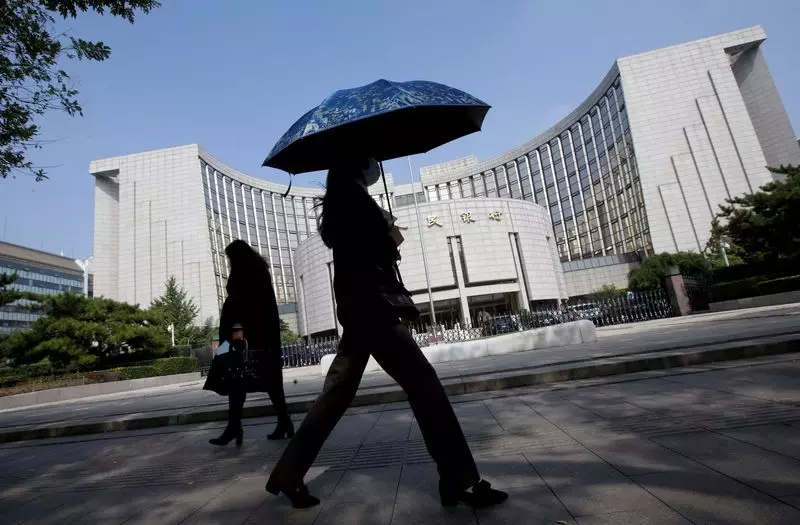In a surprising move, the People’s Bank of China (PBOC) chose to maintain its benchmark lending rates during the monthly fixing this past Friday. This decision runs counter to widespread expectations that anticipated a reduction, especially following the Federal Reserve’s recent aggressive interest rate cut. Market analysts had geared themselves for a shift in China’s monetary policy, yet the PBOC’s choice not to lower the one-year loan prime rate (LPR) from 3.35% or the five-year LPR from 3.85% has left many pondering the underlying strategy driving this unexpected move.
The context of this decision is critical. As economic pressures continue to build, it is widely acknowledged that further stimulus measures will likely be necessary to bolster a struggling economy. The Federal Reserve’s easing of monetary policy may afford Beijing the flexibility to adjust its own stance without significantly undermining the yuan. This situation highlights a delicate balance China must maintain to encourage domestic growth while defending its currency against the backdrop of prevailing global economic conditions.
Despite the recent stability in lending rates, market sentiment suggests a strong belief that additional stimulus is on the horizon. A significant portion of the financial community seems convinced that rate adjustments are imminent. A recent survey conducted by Reuters that included 39 market participants revealed that 69% expected cuts in both lending rates. Analysts, including Xing Zhaopeng from ANZ, speculate that any future rate cut will be part of a more comprehensive policy package currently under review by Chinese officials.
The urgency for policy action has intensified as recent economic data, particularly from August, has consistently underperformed. Indicators related to credit lending and overall economic activity have raised alarms among economists, suggesting that more robust measures are essential to sustain China’s position as the world’s second-largest economy. Given this landscape, the Chinese government faces mounting pressure to ensure that its economic objectives for 2024 are met, particularly amidst growing fears that the actual growth rate may fall below the official target of approximately 5%.
Chinese policymakers are in a precarious position, grappling with an array of challenges that hinder their ability to implement necessary changes in monetary policy. The divergence in monetary policy from other major economies, coupled with a depreciating yuan, has acted as a significant constraint on these efforts. Analysts from Commerzbank provide insights into this dynamic, emphasizing that the current lackluster growth and the recent rate cuts by the Fed signal a need for the PBOC to reconsider its stance.
While the one-year LPR directly influences the majority of new and outstanding loans in China, the five-year rate plays a crucial role in shaping mortgage pricing. Thus, the PBOC’s future decisions will undoubtedly have profound implications for various sectors, particularly real estate, which has been under significant strain.
Furthermore, President Xi Jinping’s recent calls for local authorities to achieve their annual economic and social development goals underscore the importance of decisive action. There appears to be a consensus that more measures are necessary to infuse new life into the economy, which has experienced stagnation and uncertainty in recent months.
As the PBOC reflects on its current approach, it becomes essential to consider potential rate cuts as a feasible tool to foster growth. In the aftermath of the Federal Reserve’s significant rate cut, the Chinese central bank may find a window of opportunity to implement similar measures without jeopardizing the stability of its currency. The broader implications of such monetary easing could drive an uptick in domestic spending and investment, which have both been faltering.
While the decision to hold rates steady may have momentarily surprised markets, it is a reflection of the complex interplay between domestic economic needs and external pressures. As the global economic landscape continues to evolve, market participants will closely monitor the PBOC’s next moves, anticipating a series of strategic decisions that could ultimately reshape China’s economic trajectory in the months ahead.

